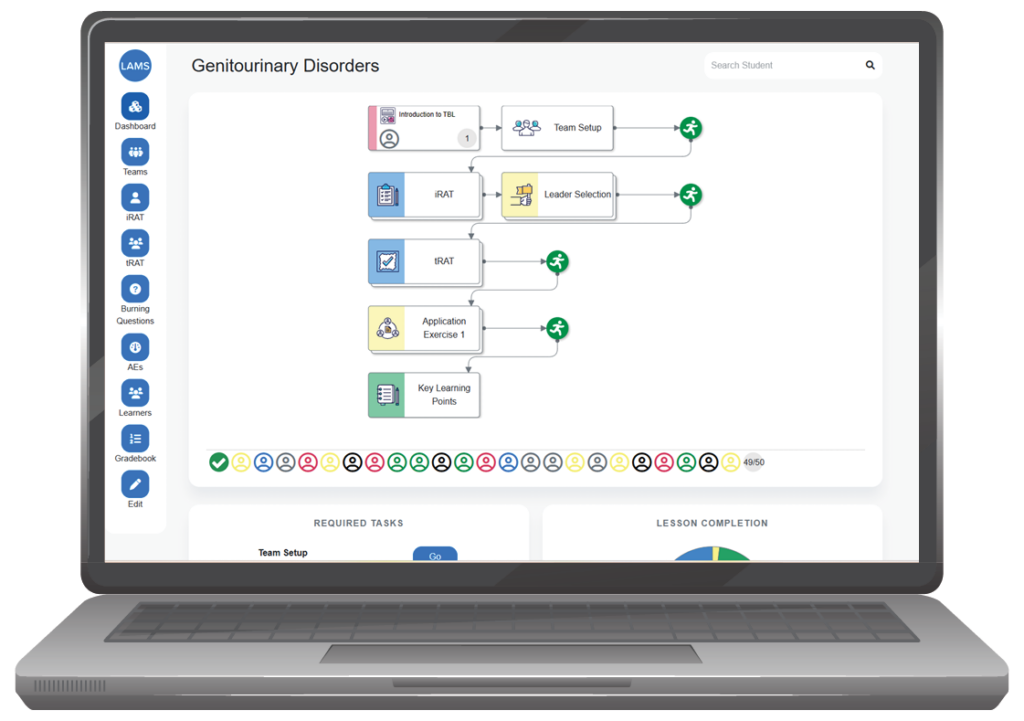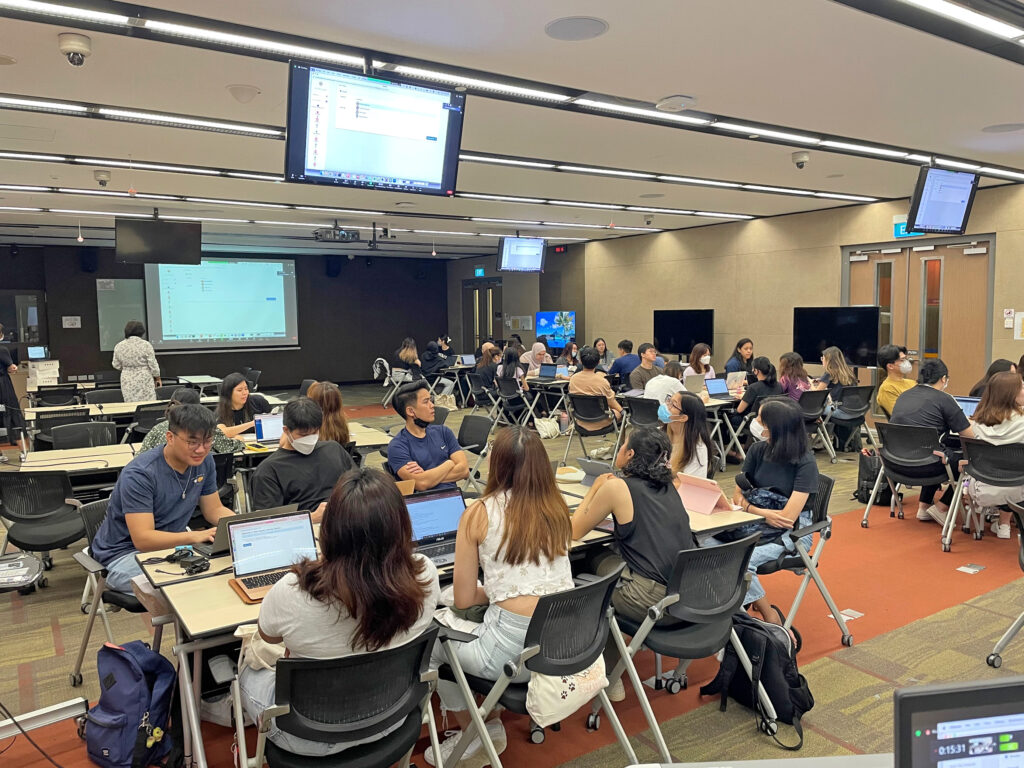What is the best way to teach a complex integrated module to a class of students from diverse backgrounds and with different appreciation of the subject matter? As Associate Professor Jeanette Ignacio from the Alice Lee Centre for Nursing Studies (NUS Nursing), National University of Singapore Yong Loo Lin School of Medicine, found out from a recent pilot she led, team-based learning could well be the solution.

Q: How did the idea of using Learning Activity Management System (LAMS) come about?
A: We have been teaching the integrated core module—Pathophysiology, Pharmacology and Nursing Practice II (NUR2125) for a few years now. One feedback that popped up time and again from students in the course is that they would like to have more interaction in class—which we also recognise to be important in solidifying their knowledge and encouraging active learning.
To address that, we explored different possibilities—we designed a collaborative learning session that involved all tutors and students working in groups; we also tried incorporating a gaming element with Kahoot! We even tried the traditional team-based learning (TBL) scratch cards. Some worked better than others. Then I came across the use of the LAMS platform—a digital team-based learning platform—when I was at a workshop. I saw first-hand how it was used to engage over 200 participants in real-time. The potential to apply it to our module was so exhilarating that it felt right to try it out for ourselves.
Q: LAMS was new to both teachers and students. Were there any challenges implementing it?
A: Before the implementation, we took time to walk lecturers through the system so that they understood its features and how they can optimise it for the TBL sessions. That helped to accustom them to LAMS. Nonetheless, the use of LAMS also meant that some lecturers had to adapt their teaching to be less didactic and more engaging. But on the whole, their experiences were positive. As for the students, they took to it very quickly. After all, most of them are digital natives—so it was no problem for them at all.
Perhaps the biggest challenge came from the technical setup. To use LAMS, we needed to ensure that we have a suitable venue that is networked with screens and microphones. To overcome these issues, we roped in the NUS Medicine’s EduTech team. We also had the vendor who provided the LAMS platform on live support. However, we are mindful to arrange more training for our faculty so that they have the confidence to operate the system independently when we roll out LAMS in a bigger way.
Q: What are some outcomes observed from the use of LAMS in the recently completed pilot run?
A: Yes, we recently ran a pilot for our cohort of 379 students. One key challenge we have teaching the NUR2125 module—besides its complexity—is to tailor the teaching to cater to a diverse group of students. Although all of them are Nursing students, some of them came from the ‘A’ Levels track while others from Nursing diploma. We also have a few mid-career switchers. So you can imagine—their understanding of the subjects are very different. Prior to using LAMS, unless they are proactive, it was hard to assess their strengths and weaknesses. With LAMS, each student takes a readiness assurance test where lecturers see their responses in real-time. This offers faculty an opportunity to clarify anything and spot students who are struggling in real-time.
In addition, when it comes to forming groups, the tendency was for students to team up with people they are comfortable with or those from similar backgrounds. In comparison, students were randomly assigned to groups in the pilot LAMS TBL sessions. The result: we saw groups made up of students from different backgrounds, interacting and learning from one another. It provided a much richer learning experience.
We also observed a higher engagement rate during the “burning questions” segment. Maybe because it is a digital system, students were more forthcoming with questions and less apprehensive in sharing their thoughts. With that, it opened up opportunities for their team members to share viewpoints. Other groups can also weigh in on the discussion before the teachers rounded up what was shared. Everyone stands to gain in this way—students gain a deeper understanding of the subject, and faculty learn which questions can be better framed through clarifications sought.
Q: Moving forward, what are your plans for LAMS?
A: We are excited about the many positive outcomes from the pilot run. The next step is to assess how we can implement and scale it up further. For example, we are exploring the possibility of using, not just TBL, but also other features of LAMS for other modules. This is to examine if the LAMS platform’s features can be maximally harnessed to benefit our students’ learning experience.
As a platform, LAMS offers other possibilities such as peer learning, peer assessment and so on. Therefore, we are also looking into how we can use these features to empower adaptive learning, which is going to be increasingly important in the evolving education landscape.

The dashboard of the Learning Activity Management System.



